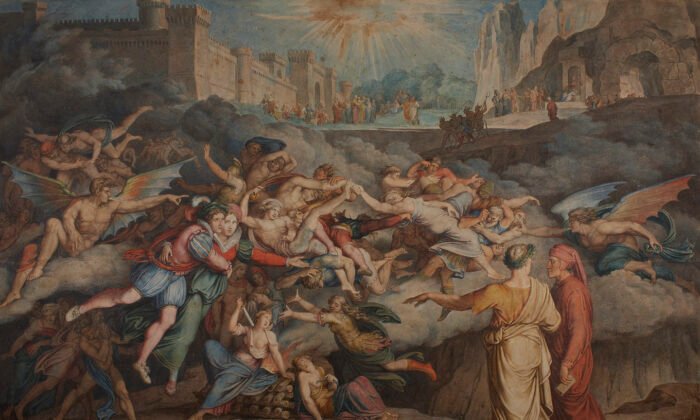Indulging Our Obsession with Hell
Hell: The ultimate destination for those who’ve grown weary of package holidays to Kuta and fancy a change of scenery—preferably one with more torment and fewer hen’s parties.
It seems the people of Singapore have cottoned on to this untapped market, transforming their Hell’s Museum (the main attraction at the Haw Par Villa park) into a veritable Disneyland of damnation.
One can only imagine the marketing meeting: “Right, how do we make eternal torment more appealing to the masses? I know! Air conditioning!” And lo and behold, the punters are flocking in like sinners to a brothel.
Seven thousand visitors a month! It’s as if they’re handing out free indulgences with every ticket.
One pictures sweaty tourists jostling for the best view of demons impaling the damned, muttering, “Well, at least it’s not as crowded as the queue for the London Eye.”
So, next time you consider a trip to Singapore’s Hell’s Museum, just remember to pack your sense of humour—and perhaps a portable fan. After all, even in air-conditioned hell, it’s bound to get a bit sticky.
But There Are Different Takes on Hell
But why settle for a mere museum when literary giants have given us such vivid tours of the netherworld?
Take Dante, for instance. The man mapped out hell with the precision of a city planner, creating nine circles of torment that make London’s M25 look like a pleasure cruise.
Not to be outdone, C.S. Lewis decided hell needed a makeover.
Out with the fire and brimstone, in with the endless drizzle and self-loathing. His hell is less “abandon all hope” and more “abandon all joy,” a place where the damned are free to leave at any time—if only they could be bothered to get off the sofa.
It’s the spiritual equivalent of a wet camping trip to the back of Bourke, where the entertainment is your own crushing despair and the only way out is to admit you’re wrong.
Then there’s Marxist Jean-Paul Sartre’s “No Exit,” which presents hell as an eternal awkward dinner party set in a Second Empire-style drawing-room.
Sartre’s diabolical twist on hell’s interior decorating sees three recently deceased souls, Joseph Garcin, Inèz Serrano, and Estelle Rigault, expecting medieval tortures but finding only the hell of bad company.
Garcin, expecting racks and red-hot pincers, is instead greeted with a valet’s eye-roll and a complete absence of physical torment.
The true torture, it turns out, is psychological. Stuck forever in a room with two others who are as pleasant as hedgehogs in one’s underpants, the trio quickly realises that the true agony is not the surroundings but the insufferable company.
It’s like being trapped in the worst reality TV show imaginable, without the luxury of changing the channel or voting someone off the hellfire island.
The play’s most famous line is spoken by Garcin: “Hell is—other people!”
These writers, in their infinite wisdom, have given us hells that serve as cosmic mirrors to our own foibles.
Dante’s is a place where justice is served with a side of irony thicker than a politician’s expense report.
Lewis, meanwhile, reminds us that the real hell is the one we create for ourselves—a never-ending cycle of regret and self-pity.
And Sartre gives us tacky décor, unbearable companions, and the burning desire to be anywhere else. His vision of hell makes one long for the simplicity of a good old-fashioned pitchforking.






